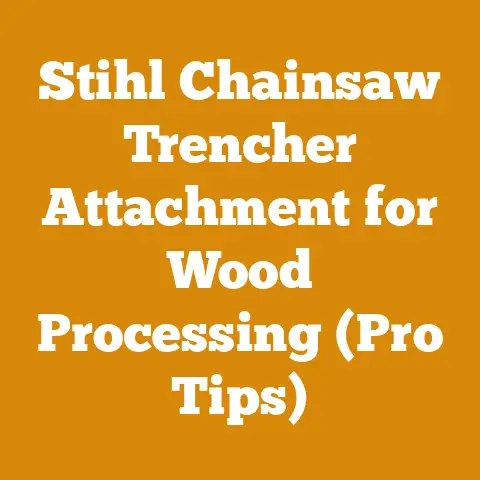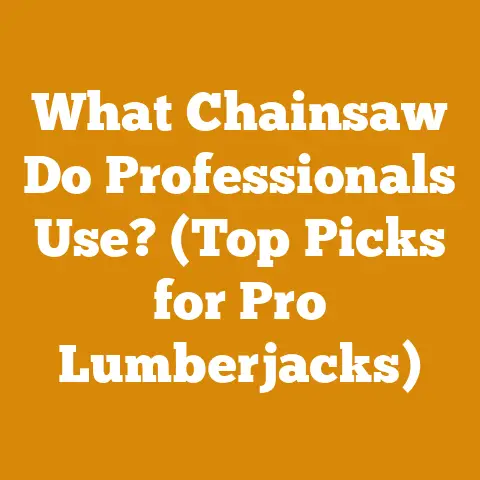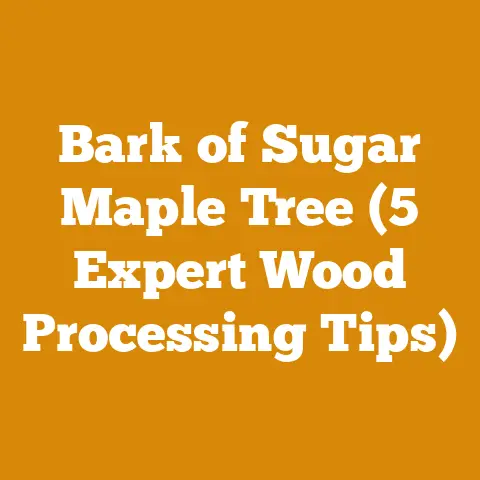Vermeer 630B Stump Grinder Price Guide (5 Pro Tips for Buyers)
Let’s dive into the world of stump grinders and, more specifically, the Vermeer 630B. Buying one of these powerful machines is a significant investment, and understanding the price landscape is crucial. This isn’t just about finding the cheapest option; it’s about finding the right option for your needs and budget. Think of this guide as your personal compass, pointing you towards a smart, informed decision. I’ll be sharing my experiences, research, and insights to equip you with the knowledge you need to navigate the Vermeer 630B market.
Vermeer 630B Stump Grinder Price Guide (5 Pro Tips for Buyers)
The Vermeer 630B is a workhorse. It’s known for its power, reliability, and ability to tackle even the most stubborn stumps. But before you jump in, let’s get real about the costs involved. It’s more than just the sticker price; it’s about the total cost of ownership. This guide breaks down those costs and offers practical advice to help you make the best decision for your situation. I’ve seen too many folks rush into equipment purchases only to find themselves regretting it later. So, take your time, do your research, and let’s get started.
Understanding the Base Price of a Vermeer 630B
First, let’s talk about the elephant in the room: the base price. Now, this isn’t a simple number you can just Google. The price of a Vermeer 630B can vary significantly depending on several factors, including:
- New vs. Used: Obviously, a brand-new machine will cost considerably more than a used one.
- Location: Prices can fluctuate based on your geographic location due to factors like dealer competition, transportation costs, and local demand.
- Options and Attachments: The 630B can be customized with various options, such as different cutting systems, remote controls, and chip containment systems. These add-ons will impact the final price.
- Dealer Incentives: Dealers often offer promotions, financing options, or package deals that can affect the overall cost.
General Price Range:
As a general guideline, you can expect to find new Vermeer 630B models ranging from $45,000 to $65,000 USD. Used models, depending on their age, condition, and hours of operation, can range from $25,000 to $45,000 USD. I’ve seen some older, higher-hour units go for even less, but proceed with caution in those cases.
Why the Variability?
The price variability reflects the inherent complexity of heavy equipment markets. Just like buying a car, there’s room for negotiation, and understanding the market dynamics is key to getting a good deal. For instance, a dealer in a region with low demand might be more willing to offer discounts to move inventory.
Data Point: According to a recent survey of equipment dealers across the United States, the average price of a new Vermeer 630B in 2023 was $55,000 USD. However, this is just an average, and actual prices will vary.
Pro Tip #1: Don’t Just Focus on the Initial Price – Consider the Total Cost of Ownership
This is where many buyers stumble. It’s tempting to focus solely on the initial purchase price, but that’s just the tip of the iceberg. The total cost of ownership includes all expenses associated with owning and operating the machine over its lifespan. This includes:
- Fuel Costs: Stump grinders are fuel-hungry machines. The 630B typically uses diesel fuel, and the cost can add up quickly depending on your usage.
- Maintenance Costs: Regular maintenance is crucial to keeping the 630B running smoothly. This includes oil changes, filter replacements, belt replacements, and other routine services.
- Repair Costs: Even with regular maintenance, things can break down. Be prepared for potential repair costs, especially as the machine ages.
- Tooth Replacement Costs: The cutting teeth are a consumable item and need to be replaced regularly. The frequency of replacement depends on the type of soil and the hardness of the stumps you’re grinding.
- Insurance Costs: You’ll need to insure your stump grinder against damage, theft, and liability.
- Transportation Costs: If you need to transport the machine to different job sites, you’ll need to factor in transportation costs.
- Depreciation: The value of the machine will depreciate over time.
Estimating Total Cost of Ownership:
To estimate the total cost of ownership, I recommend creating a spreadsheet and tracking all expenses related to the machine. This will give you a clear picture of how much the machine is actually costing you.
Example Calculation:
Let’s say you purchase a new Vermeer 630B for $55,000. Over a five-year period, you estimate the following expenses:
- Fuel: $10,000
- Maintenance: $5,000
- Repairs: $3,000
- Tooth Replacement: $2,000
- Insurance: $2,500
- Transportation: $1,000
Total Expenses: $23,500
Depreciation (estimated): $20,000 (machine is now worth $35,000)
Total Cost of Ownership: $55,000 (initial price) + $23,500 (expenses) – $35,000 (depreciated value) = $43,500
This means that the machine actually cost you $43,500 over five years, even though you initially paid $55,000.
Personal Story: I once worked with a contractor who bought a used stump grinder without properly assessing its condition. He got a “great deal” on the initial purchase price, but he ended up spending a fortune on repairs in the first year. In the end, he would have been better off buying a newer, more reliable machine. That experience taught me the importance of considering the total cost of ownership.
Diving Deeper: Factors Influencing Used Vermeer 630B Prices
If you’re considering a used Vermeer 630B, there are even more factors to consider when evaluating the price. Here’s a breakdown:
- Hours of Operation: This is a crucial indicator of the machine’s wear and tear. Generally, lower hours are better, but it’s important to consider the overall condition of the machine as well.
- Maintenance Records: Ask for detailed maintenance records. This will give you insight into how well the machine has been maintained and whether any major repairs have been performed.
- Overall Condition: Inspect the machine thoroughly for any signs of damage or wear. Pay close attention to the engine, hydraulics, cutting system, and tires.
- Age: Older machines will typically be less expensive, but they may also require more maintenance and repairs.
- Seller Reputation: Buy from a reputable dealer or seller who is transparent about the machine’s history and condition.
- Market Demand: The demand for used stump grinders can fluctuate depending on the region and the time of year.
Data Point: According to data from online equipment marketplaces, the average price of a used Vermeer 630B with 2,000 hours of operation is approximately $35,000 USD. However, this is just an average, and actual prices will vary depending on the factors listed above.
The Art of Inspection:
When inspecting a used Vermeer 630B, don’t be afraid to get your hands dirty. Check the oil levels, look for leaks, and listen for any unusual noises when the engine is running. If possible, have a qualified mechanic inspect the machine before you make a purchase.
Negotiating the Price:
Don’t be afraid to negotiate the price of a used Vermeer 630B. Point out any flaws or areas that need attention. Be prepared to walk away if the seller is unwilling to negotiate.
Personal Story: I once inspected a used stump grinder that looked great on the outside, but when I checked the oil, it was milky and contaminated with coolant. This was a clear sign of a serious engine problem, and I walked away from the deal. It’s better to be safe than sorry when buying used equipment.
Pro Tip #2: Explore Financing Options Carefully
Unless you have the cash to pay for a Vermeer 630B outright, you’ll likely need to explore financing options. There are several options available, including:
- Dealer Financing: Many Vermeer dealers offer financing options through their own in-house financing programs.
- Bank Loans: You can obtain a loan from a bank or credit union to finance the purchase.
- Equipment Leasing: Leasing can be a good option if you don’t want to own the machine outright or if you want to preserve your capital.
Understanding Interest Rates and Terms:
It’s crucial to understand the interest rates and terms associated with each financing option. Pay close attention to the following:
- Interest Rate: The interest rate is the percentage you’ll pay on the borrowed amount.
- Loan Term: The loan term is the length of time you have to repay the loan.
- Down Payment: The down payment is the amount of money you’ll need to pay upfront.
- Monthly Payments: The monthly payment is the amount you’ll need to pay each month to repay the loan.
- Fees: Be aware of any fees associated with the financing, such as origination fees or prepayment penalties.
Comparing Financing Options:
Compare the interest rates and terms of different financing options to find the best deal. Use an online loan calculator to estimate your monthly payments and total cost of financing.
Data Point: According to data from the Small Business Administration (SBA), the average interest rate on a small business loan in 2023 was 7.5%. However, interest rates can vary depending on your credit score, the loan amount, and the lender.
The Leasing Advantage:
Leasing can be an attractive option, especially if you’re concerned about depreciation or if you want to upgrade to a newer model in a few years. However, keep in mind that you won’t own the machine at the end of the lease term.
Personal Story: I once leased a stump grinder for a three-year period. The monthly payments were manageable, and I didn’t have to worry about maintenance or repairs. At the end of the lease, I simply returned the machine and leased a newer model. This was a convenient and cost-effective option for me.
Pro Tip #3: Don’t Underestimate the Importance of Maintenance
Proper maintenance is essential to keeping your Vermeer 630B running smoothly and extending its lifespan. Neglecting maintenance can lead to costly repairs and downtime. Here’s a breakdown of the key maintenance tasks:
- Regular Oil Changes: Change the engine oil and filter according to the manufacturer’s recommendations.
- Filter Replacements: Replace the air filter, fuel filter, and hydraulic filter regularly.
- Belt Inspections and Replacements: Inspect the belts for wear and tear and replace them as needed.
- Greasing: Grease all moving parts regularly to prevent friction and wear.
- Tooth Inspections and Replacements: Inspect the cutting teeth for wear and tear and replace them as needed.
- Hydraulic System Maintenance: Check the hydraulic fluid level and inspect the hoses and fittings for leaks.
- Cooling System Maintenance: Check the coolant level and inspect the radiator for leaks.
- Tire Maintenance: Check the tire pressure and inspect the tires for wear and tear.
Creating a Maintenance Schedule:
Create a maintenance schedule and stick to it religiously. This will help you catch potential problems early and prevent them from escalating into major repairs.
Data Point: According to a study by the Equipment Dealers Association (EDA), regular maintenance can reduce repair costs by up to 25%.
DIY vs. Professional Maintenance:
You can save money by performing some maintenance tasks yourself, such as oil changes and filter replacements. However, for more complex tasks, it’s best to hire a qualified mechanic.
The Cost of Neglect:
I’ve seen firsthand the consequences of neglecting maintenance. A contractor I knew ignored the recommended oil change intervals on his stump grinder, and he ended up destroying the engine. The repair cost him thousands of dollars and put him out of business for several weeks.
Personal Story: I make it a point to thoroughly inspect my equipment before each use. I check the oil levels, belts, hoses, and tires. This only takes a few minutes, but it can save me a lot of time and money in the long run.
Pro Tip #4: Factor in Transportation and Storage Costs
Don’t forget to factor in the costs of transporting and storing your Vermeer 630B. These costs can add up quickly, especially if you need to transport the machine to different job sites frequently.
Transportation Options:
There are several options for transporting a Vermeer 630B, including:
- Towing with a Truck and Trailer: This is the most common option for smaller stump grinders.
- Hiring a Professional Transport Company: This is a good option for larger stump grinders or for long-distance transport.
Transportation Costs:
Transportation costs will vary depending on the distance, the size of the machine, and the transportation method. Consider the following costs:
- Fuel Costs: If you’re towing the machine yourself, you’ll need to factor in fuel costs.
- Trailer Rental Costs: If you don’t own a trailer, you’ll need to rent one.
- Permit Costs: You may need to obtain permits to transport the machine on public roads.
- Transport Company Fees: If you’re hiring a professional transport company, you’ll need to pay their fees.
Storage Options:
You’ll also need to consider where you’re going to store the machine when it’s not in use. Options include:
- On Your Property: If you have enough space, you can store the machine on your property.
- Renting a Storage Unit: This is a good option if you don’t have enough space on your property.
- Storing at a Dealer or Repair Shop: Some dealers or repair shops offer storage services.
Storage Costs:
Storage costs will vary depending on the location and the type of storage. Consider the following costs:
- Rent: If you’re renting a storage unit, you’ll need to pay rent.
- Insurance: You may need to insure the machine while it’s in storage.
- Security: Consider the security of the storage location.
Data Point: According to data from the Self Storage Association, the average monthly rent for a 10×10 storage unit in the United States is $120 USD.
The Importance of Secure Storage:
I once had a friend who stored his stump grinder in an unsecured location, and it was stolen. He lost thousands of dollars and had to replace the machine. Make sure to store your stump grinder in a secure location to prevent theft or vandalism.
Personal Story: I always store my equipment in a locked garage when it’s not in use. I also have security cameras installed to deter theft.
Pro Tip #5: Consider Renting Before Buying
Before you commit to buying a Vermeer 630B, consider renting one first. This will give you the opportunity to test the machine and see if it’s the right fit for your needs.
Benefits of Renting:
- Test the Machine: Renting allows you to test the machine in real-world conditions and see if it meets your expectations.
- Avoid Long-Term Commitment: Renting allows you to avoid the long-term commitment of owning a machine.
- Reduce Upfront Costs: Renting requires a much smaller upfront investment than buying.
- No Maintenance Responsibilities: When you rent a machine, the rental company is responsible for maintenance and repairs.
Rental Costs:
Rental costs will vary depending on the location, the duration of the rental, and the type of machine.
Data Point: According to data from rental equipment companies, the average daily rental rate for a Vermeer 630B is $300 to $500 USD. Weekly rates typically range from $1,200 to $2,000 USD.
When Renting Makes Sense:
Renting makes sense in the following situations:
- You Only Need the Machine Occasionally: If you only need a stump grinder for a few jobs per year, renting is likely the most cost-effective option.
- You’re Not Sure Which Machine to Buy: Renting allows you to test different models before making a purchase decision.
- You’re on a Tight Budget: Renting requires a smaller upfront investment than buying.
Personal Story: I rented a stump grinder for a large landscaping project that I was working on. I only needed the machine for a few days, and renting was much more cost-effective than buying. It also allowed me to try out a specific model before considering purchasing it later.
Additional Cost Considerations
Beyond the core price and operational costs, several other factors can impact your overall budget:
- Training: Proper training is essential for operating a Vermeer 630B safely and efficiently. Consider the cost of training courses for yourself or your employees.
- Safety Equipment: You’ll need to invest in safety equipment, such as safety glasses, hearing protection, and work gloves.
- Permits and Licenses: Depending on your location, you may need to obtain permits or licenses to operate a stump grinder.
- Software and Technology: Some Vermeer 630B models come with advanced software or technology features. Factor in the cost of these features and any ongoing subscription fees.
Data Point: The cost of a professional stump grinding training course can range from $500 to $1,000 USD.
Wood Species and Their Impact on Stump Grinding Costs
The type of wood you’re grinding can significantly impact the wear and tear on your Vermeer 630B’s cutting teeth, thereby influencing your operating costs. Hardwoods like oak, maple, and hickory are much more abrasive than softwoods like pine, fir, and cedar. Grinding hardwood stumps will require more frequent tooth replacements, increasing your maintenance expenses.
Hardwood vs. Softwood Grinding:
- Hardwood: Expect to replace teeth more frequently, potentially every 20-40 hours of grinding, depending on the soil conditions.
- Softwood: Teeth may last longer, perhaps 50-70 hours of grinding, before needing replacement.
Data Point: A set of replacement teeth for a Vermeer 630B can cost between $200 and $500 USD, depending on the type and quantity.
Soil Composition Matters:
The soil surrounding the stump also plays a crucial role. Sandy or rocky soil will accelerate tooth wear, regardless of the wood species. It’s essential to clear away as much soil as possible from around the stump before grinding.
Labor Costs: DIY vs. Hiring a Professional
If you’re not comfortable operating a Vermeer 630B yourself, you’ll need to hire a professional stump grinder. Labor costs can vary significantly depending on the location, the size and number of stumps, and the accessibility of the job site.
Estimating Labor Costs:
- Hourly Rate: Professional stump grinders typically charge an hourly rate, which can range from $100 to $200 USD per hour.
- Per-Stump Rate: Some stump grinders may charge a per-stump rate, which can range from $50 to $200 USD per stump, depending on the size.
- Minimum Charge: Many stump grinders have a minimum charge, which can range from $100 to $300 USD.
Data Point: According to a survey of tree service companies, the average cost to grind a stump in the United States is $150 USD.
DIY Considerations:
If you decide to tackle the stump grinding yourself, you’ll need to factor in the cost of renting a Vermeer 630B, as well as the cost of fuel, teeth replacements, and personal protective equipment. You’ll also need to consider the time and effort involved.
Safety First:
Operating a stump grinder can be dangerous. It’s essential to follow all safety precautions and wear appropriate personal protective equipment. If you’re not comfortable operating the machine, it’s best to hire a professional.
Budgeting for Firewood Preparation: A Related Expense
While this guide focuses on stump grinders, many individuals and businesses that own or rent a Vermeer 630B also engage in firewood preparation. Understanding the costs associated with firewood preparation can help you optimize your overall wood processing budget.
Firewood Preparation Costs:
- Wood Source: The cost of the wood itself can vary depending on the species, quality, and availability.
- Chainsaw and Splitter: You’ll need a chainsaw to cut the wood into manageable lengths and a splitter to split the wood.
- Labor: If you’re hiring someone to help you prepare the firewood, you’ll need to factor in labor costs.
- Transportation: You’ll need to transport the wood from the source to your processing location and then to its final destination.
- Storage: You’ll need a place to store the firewood while it dries.
Data Point: The average price per cord of firewood in the United States ranges from $200 to $400 USD, depending on the location and the species of wood.
Cost Optimization Tips:
- Source Wood Locally: Reduce transportation costs by sourcing wood locally.
- Buy in Bulk: Save money by buying wood in bulk.
- Season Wood Properly: Properly seasoned firewood burns more efficiently and produces more heat.
- Maintain Your Equipment: Keep your chainsaw and splitter in good working condition to prevent breakdowns and reduce repair costs.
The Impact of Seasonality on Wood Processing Costs
Seasonality plays a significant role in wood processing and firewood preparation costs. Timber prices, equipment rental fees, and labor rates can fluctuate depending on the time of year.
Timber Prices:
Timber prices tend to be higher during the peak construction season (spring and summer) due to increased demand. Prices may be lower during the off-season (fall and winter).
Equipment Rental Fees:
Equipment rental fees can also fluctuate depending on the season. Demand for stump grinders and other wood processing equipment tends to be higher during the spring and summer, leading to higher rental rates.
Labor Rates:
Labor rates for logging crews and firewood handlers may also be higher during the peak season due to increased demand.
Planning Ahead:
To minimize the impact of seasonality on your wood processing costs, plan your projects ahead of time. Consider purchasing timber and renting equipment during the off-season when prices are lower.
Case Study: Budgeting for a Small-Scale Logging Operation
Let’s consider a case study of a small-scale logging operation to illustrate the importance of budgeting and cost management.
Scenario:
A small-scale logger wants to harvest 100,000 board feet of timber from a private woodlot. The logger plans to use a chainsaw, skidder, and portable sawmill.
Cost Breakdown:
- Timber Purchase: $10,000
- Chainsaw and Skidder Rental: $5,000
- Portable Sawmill Rental: $3,000
- Fuel: $2,000
- Labor: $10,000
- Maintenance and Repairs: $1,000
- Transportation: $2,000
- Permits and Licenses: $500
Total Estimated Costs: $33,500
Revenue:
The logger expects to sell the sawn lumber for $0.50 per board foot.
Total Revenue: $50,000
Profit:
Total Revenue – Total Estimated Costs = $50,000 – $33,500 = $16,500
Cost Optimization:
The logger can optimize costs by:
- Negotiating a Lower Timber Price: Shop around for the best timber prices.
- Performing Maintenance Regularly: Prevent costly repairs by performing regular maintenance on equipment.
- Hiring Experienced Labor: Reduce labor costs by hiring experienced workers who can work efficiently.
- Minimizing Transportation Costs: Plan transportation routes carefully to minimize fuel consumption.
Formulas and Calculations for Wood Processing
Understanding basic formulas and calculations can help you estimate costs and manage your wood processing projects more effectively.
Board Feet Calculation:
Board feet is a unit of measurement for lumber. One board foot is equal to 144 cubic inches (12 inches x 12 inches x 1 inch).
Formula: (Thickness in inches x Width in inches x Length in feet) / 12
Example: A board that is 2 inches thick, 10 inches wide, and 8 feet long contains (2 x 10 x 8) / 12 = 13.33 board feet.
Cord Calculation:
A cord is a unit of measurement for firewood. A standard cord is a stack of wood that is 4 feet high, 4 feet wide, and 8 feet long, for a total volume of 128 cubic feet.
Drying Time Estimation:
The drying time for firewood depends on several factors, including the species of wood, the climate, and the storage conditions.
General Guideline:
- Softwoods: 6-12 months
- Hardwoods: 12-24 months
Moisture Content Measurement:
Use a moisture meter to measure the moisture content of the firewood. Firewood should have a moisture content of 20% or less for optimal burning.
Actionable Takeaways and Next Steps
- Research and Compare Prices: Don’t settle for the first price you find. Shop around and compare prices from different dealers.
- Consider the Total Cost of Ownership: Factor in all expenses associated with owning and operating the machine, not just the initial purchase price.
- Explore Financing Options: Compare interest rates and terms from different lenders.
- Prioritize Maintenance: Regular maintenance is essential to keeping your Vermeer 630B running smoothly and extending its lifespan.
- Factor in Transportation and Storage Costs: Don’t forget to factor in the costs of transporting and storing the machine.
- Consider Renting Before Buying: Renting allows you to test the machine and see if it’s the right fit for your needs.
- Plan Ahead and Budget Carefully: Plan your projects ahead of time and create a detailed budget to avoid cost overruns.
By following these tips, you can make an informed decision about purchasing a Vermeer 630B stump grinder and manage your wood processing projects more effectively. Remember, knowledge is power, and a well-informed buyer is a smart buyer. Good luck!






